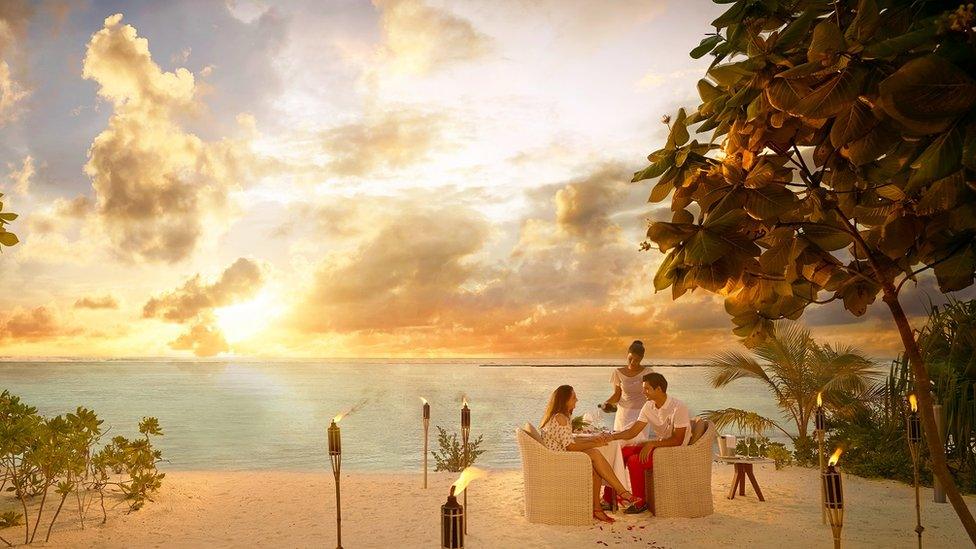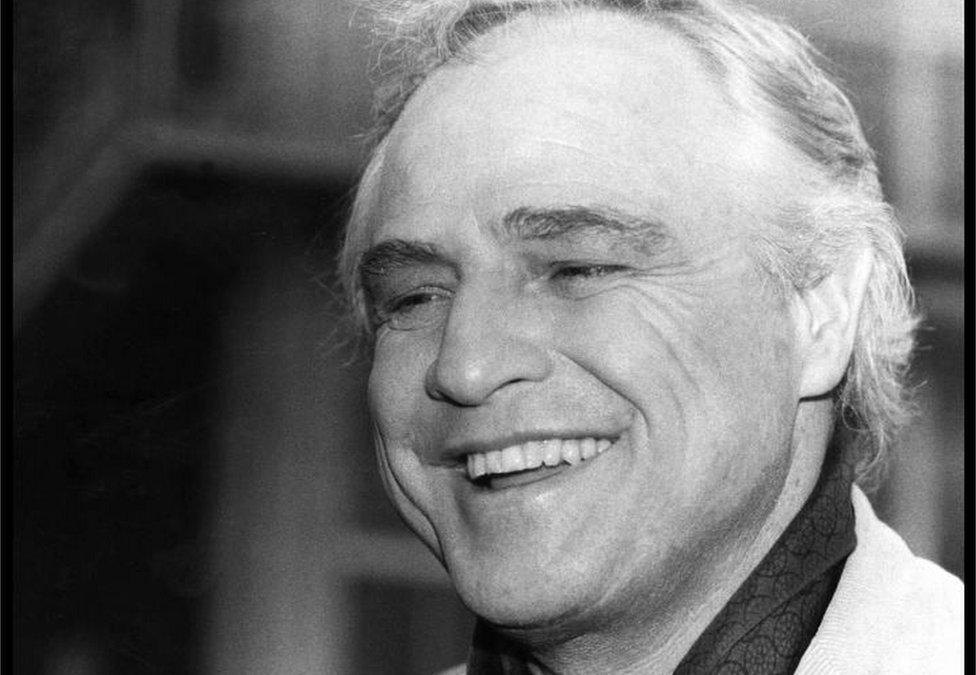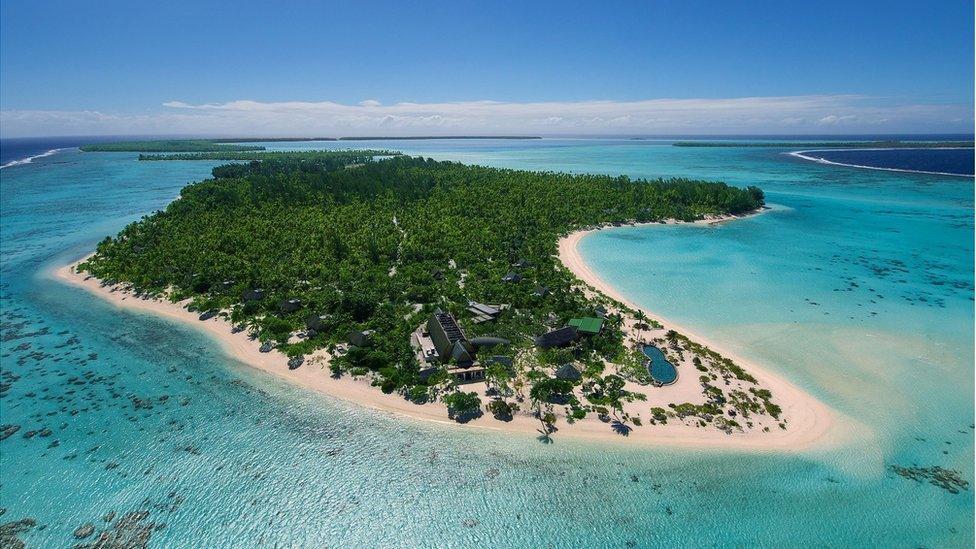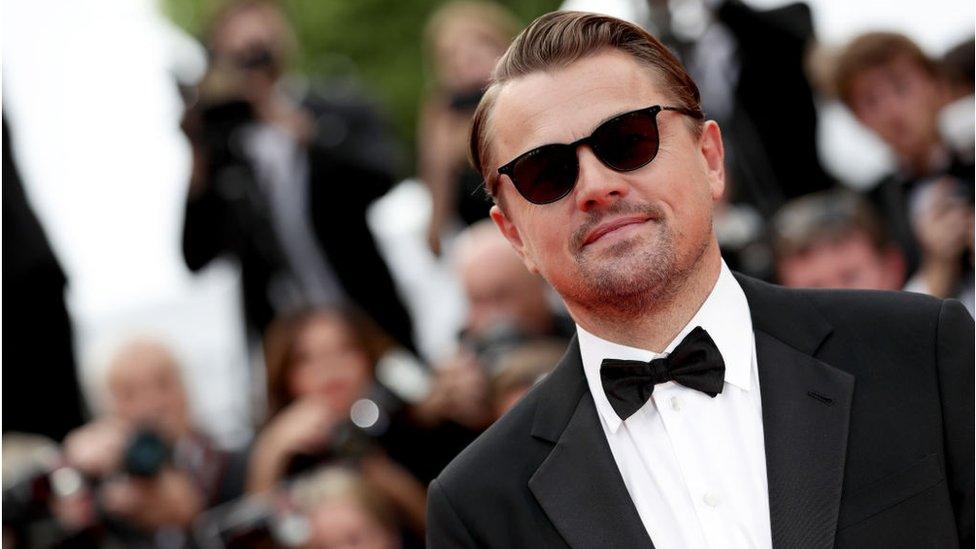The sea-cooled eco-resort that's nearly mosquito-free
- Published

Fancy top-notch luxury on a paradise island for a minimum of £3,200 a night for a two-room bungalow?
The Brando is one of the most luxurious eco-resorts on the planet, nestling on an atoll in the middle of the Pacific Ocean. It's the last place you might think to find pioneering technology. But you'd be surprised.
The Brando resort on Tetiaroa - a stunning atoll north of Tahiti - is the epitome of luxurious exclusivity. Two-room bungalows start from €3,700 (£3,200) a night.
Formerly owned by Hollywood legend Marlon Brando, who was keen that it should become an ecological haven, it has now developed in to a hideaway for the rich and famous seeking conscience-soothing holidays that do less harm to the planet.

Marlon Brando always wanted the atoll to be an ecological preserve
While some have dismissed the resort as an "island for liberal elites" - Beyoncé and Barack Obama were recent guests - current owner Richard Bailey claims it is close to becoming "carbon neutral and self-sustainable".
Electricity at the complex, for example, is generated from solar panels and coconut oil biofuel, while waste water is used for sustainable irrigation.
And the resort's cooling system uses a "closed loop heat exchanger" that takes very cold sea water from 900m (2,950ft) below the surface of the Pacific Ocean to cool the fresh water and air circulating round the complex.
As the cooling system is powered largely by water pressure, it uses very little energy.

The Brando resort is nearly carbon-neutral, but guests still need to fly there in polluting planes
"It is often felt that sustainability is not compatible with the luxury end of the hospitality market, but The Brando proves it is possible," says Prof Graham Miller, who holds a chair in sustainability in business at the University of Surrey.
But, of course, visitors to The Brando have to fly to Tahiti first then take another "20-minute flight to paradise", so their carbon footprint is still significant.
The well-heeled guests are unlikely to be bitten by mosquitoes either, due to a sterilisation programme that has slashed Tetiaroa's mosquito population by at least 95%.
Led by Dr Hervé Bossin of the Institut Louis Malardé, the programme breeds and releases non-biting male mosquitoes infected with Wolbachia bacteria that makes wild females - who do bite - sterile.

Tetiaroa and surrounding atolls are a haven for wildlife
Similar initiatives, aimed at stamping out diseases such as Dengue and Zika, are underway in countries such as Australia, Colombia and China.
But few countries have enjoyed the same level of success as Tetiaroa, where mosquito levels are now so low "the team is simply not catching any wild females anymore", according to Frank Murphy, executive director of the Tetiaroa Society, a non-governmental organisation (NGO) involved in the sterilisation programme.
"The success of the project recently convinced the local government to fund a much larger breeding facility that could see the programme expand to other Pacific islands," he says.
Mosquitoes are not the only pests the Tetiaroa Society is working to eradicate. Rats are a big problem for the ecosystem of the atoll.

Island Conservation used drones successfully in the Galapagos Islands to tackle invasive rats
"Rats eat everything from baby turtles to sea birds, and that is bad news for the coral reef too," Mr Murphy says.
Technology could help here, too.
The team wants to use 2.2m-diameter drones to drop poisonous bait designed to attract rats but not other species.
The operation, only the second ever, will be led by Island Conservation, a US NGO that protects endangered species by removing invasive ones.
"Rats can cause the collapse of the entire terrestrial ecosystem," says Island Conservation's Sally Esposito.


"In the past, we have used helicopters to spread bait, but we recently used drones for the first time on Seymour Norte in the Galapagos Islands.
"Tetiaroa is a more difficult environment, so it's a great opportunity to test the drones further, and should help us to create a haven for endangered native species, such as the Polynesian Ground-dove and the Tuamotu Sandpiper."
Perhaps the most futuristic project on Tetiaroa is the Island Digital Ecosystem Avatar, which uses light detection and ranging (Lidar) surveys to create a 3D model. Other data, about animals, plants, topography, and so on, will be incorporated, to create a model that could be used to predict how the island might react in different scenarios, from flooding to the introduction of new species.

Could the tech innovations in such resorts encourage others to become more sustainable?
"The Lidar surveys give us a 3D representation of the physical contours of the island, including the soils," says Tetiaroa Society scientific director Neil Davies - a senior fellow at the Berkeley Institute for Data Science.
"It's a bit like putting the island through a scanner."
The team's eventual aim is to capture the atoll's whole ecosystem - "from molecule upwards" - so it can help local governments and communities evaluate future risks and make better decisions.
Eco-tourism is a growing trend that resorts are seeking to exploit around the world, as people seek to make more responsible choices in the face of climate change.

Leonardo DiCaprio is also developing an eco-resort
For example, the Parkside Hotel & Spa in Canada, along with The Brando, is one of just a handful of resorts to attain the US Green Building Council's Leadership in Energy and Environmental Design platinum certification.
It has a 290 sq m (3,000 sq ft) vegetated roof, and uses ponds and storm water storage tanks as a heat sink for its air conditioning system.
And actor Leonardo DiCaprio, a high-profile environmental campaigner and The Brando regular - is set to open his Blackadore Caye eco-island resort off Belize in 2020.
But with tourism contributing around 8% to global greenhouse gas emissions, according to one recent paper published in the scientific journal Nature Climate Change, all resorts will need to become carbon neutral, not just those targeting the world's rich.
Follow Technology of Business editor Matthew Wall on Twitter, external and Facebook, external